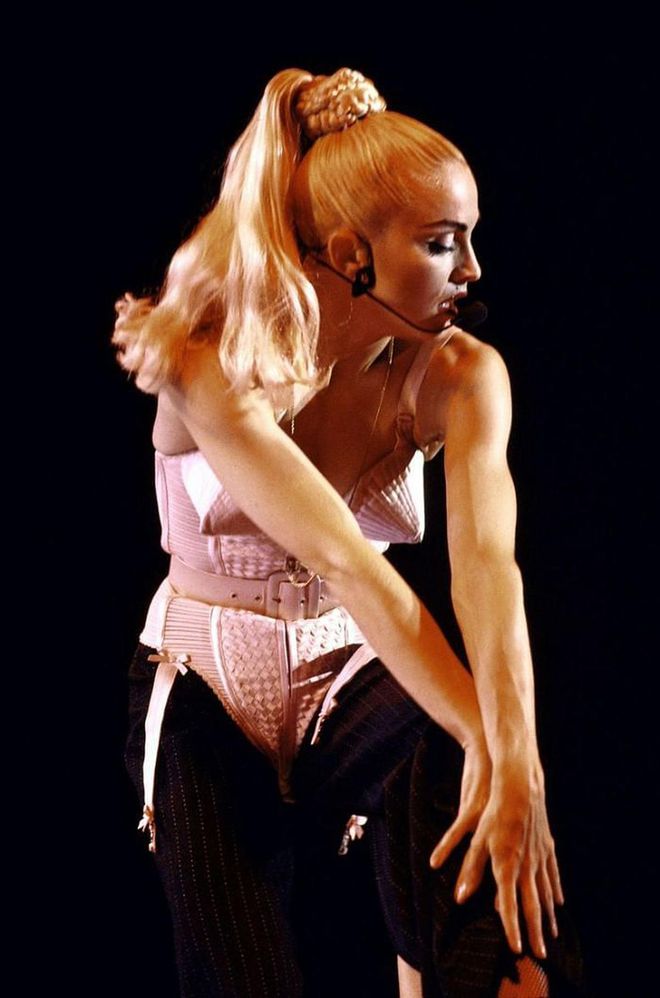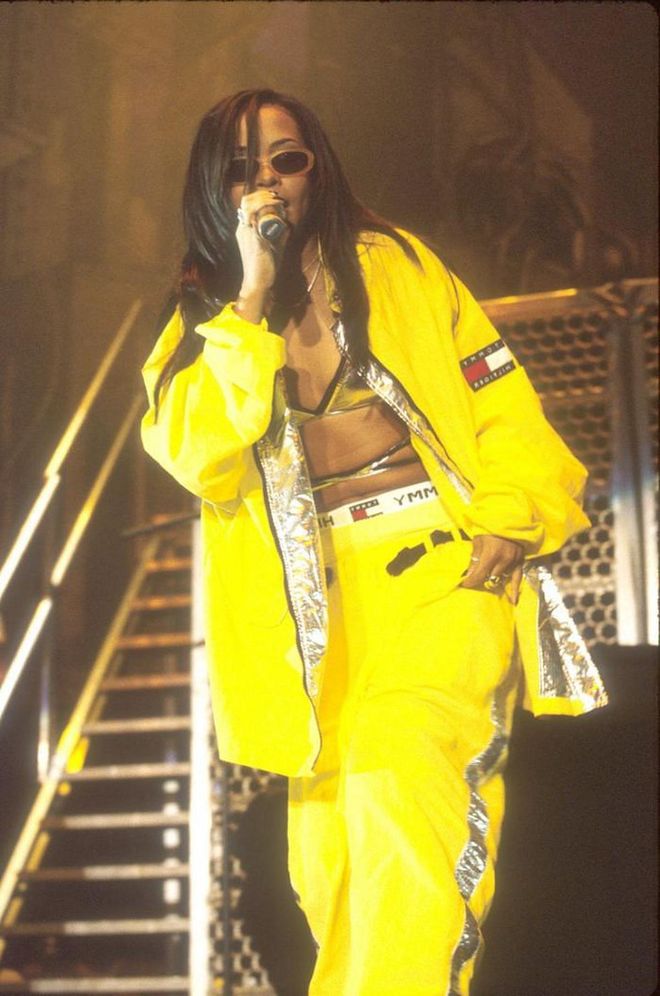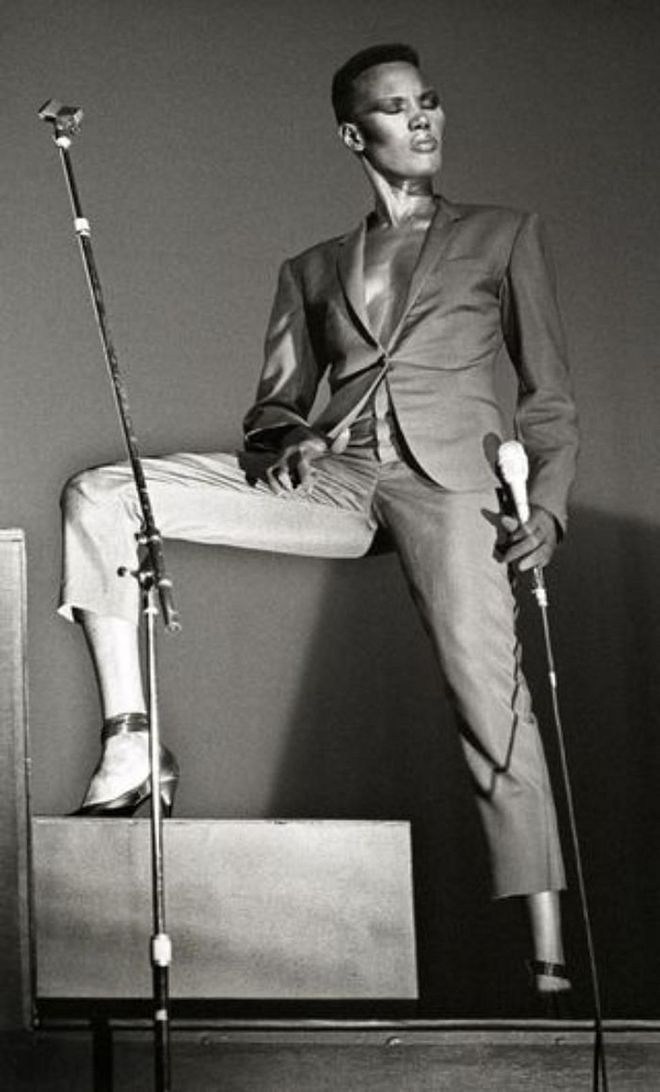R&B And Pop Stars Are Taking Ownership Of Their Images Like Never Before
Why even a well-done Whitney Houston licensing deal with skate label Palace feels like a relic


Palace Skate’s Whitney Houston Collection. Photo: Courtesy
Palace Skate Whitney Houston
Earlier in the month, London skate label Palace collaborated with the estate of Whitney Houston and her Legacy Foundation on a capsule collection of crewnecks, tees, and a cherry-red varsity jacket reading in all caps, “Whitney,” on the back and, “Houston,” on the front. Cool and laid-back, the pieces play off Houston's chill everyday aesthetic (a black tee with Richard Avedon’s image of the singer would look amazing tucked into a pair of vintage-styled Still Here jeans or classic 501s). But more than just look good, they do good. Giving back to charities Houston supported, Palace is donating all profits from the collection to organizations that fund civil rights legal work for kids, provide college grants for Black students, combat child diabetes, and more.

Photo: Courtesy
Palace Whitney Houston
The capsule collection is well done—and already selling out. Part of the appeal is that throwback feel. In the '80s and '90s, when Whitney reigned, it wasn't uncommon to see fashion lines license an image of a musical artist, or contract with them for an ad campaign. But the kind of artist-led fashion collaborations and collections we're used to seeing now from stars like Rihanna or Zendaya are far more recent developments. Then, pop stars inspired fashion, rather than created it.
Related article: Skateboard Brand Palace Collaborates With Moschino

Madonna in Jean Paul Gaultier. Photo: Time Life Pictures
Jean Paul Gaultier Madonna
The relationship between music and fashion has always been powerful. What would punk be without Vivienne Westwood’s SEX shop and safety pins, or current-scene techno without Nike Tuned? Visual identity is part of the artistic statement: Looks embody not just moments but attitude, essence, and underlying culture. In turn, what would the runway be without the voices of pop, rap, and R&B? In turn, the stars of pop, rap, and R&B have long influenced designers and ready-to-wear. From Jean Paul Gaultier’s spring/summer 2013 ’80s pop star collection, which reinterpreted the original looks of Blonde Ambition and Nightclubbing for the 2010s, to Marc Jacobs’s infamous 1993 Perry Ellis grunge collection starring Sonic Youth and, well, just about everything Hedi Slimane has ever made, prominent designers have referenced pop and other music stars and their likenesses time and time again.

Aaliyah performing in one of her signature looks. Photo: Jeffrey Mayer/Getty
Tommy Hilfiger Aaliyah
The artist-as-muse relationship often took on outsize influence, particularly in the case of Aaliyah and Tommy Hilfiger. Her signature style--oversized baggie pants, cyber-futuristic shades, and minimal bra tops fused street sensibility, hints of rave, BDSM aesthetics, and stripped-down tomboy staples--made for a look like no one else’s. It would go on to shape the designs and marketing of ’90s Tommy Hilfiger (who booked her in a 1996 campaign alongside a then 21-year-old Mark Ronson). When Hilfiger contracted Aaliyah, it wasn’t a simple slapping of his clothes on the R&B star—the artist was already sporting Tommy jeans and windbreakers, and the way she wore them was already her own. She influenced him.

Photo: Rob Verhorst/Getty
Grace Jones
Today, female music stars are not just inspiration, but collaborators and creators, taking design control and financial ownership. A perennial early adopter, in 2007, Madonna released on a capsule collection for H&M, in which the icon worked alongside H&M designer Margareta van den Bosch to deliver a range of minimal, almost office-ready black-and-white essentials.
Fast-forward to 2018, Zendaya (though an actress and not a musician) collaborated with Tommy Hilfiger on not one but two collections: spring 2019 and a memorable fall 2019 offering shown in the legendary Apollo Theater. The most recent collection draws from the style of Black women in 1970s New York and beyond—Zendaya’s grandmother in particular. A burgundy velvet flared suit, deep-V-cut single-buttoned jackets, snakeskin wide-legged pants—the clothes merge Carter-era Harlem style and modern-day Tommy with a message not just about taste but identity.
Related article: Zendaya And Tommy Hilfiger’s Harlem Runway Was A Block Party Bash

Zendaya for her Tommy Hilfiger collaboration. Photo: Tim P. Whitby/Getty
Tommy Hilfiger Zendaya
In 2019, Robyn launched a capsule collection, RBN, with Swedish brand Björn Borg, delivering gender-neutral hoodies and tracksuits based around the brand’s archive and her own closet. She designed the collection alongside her friend, stylist Naomi Itkes, and the pieces—like a burnt orange-and-black color-blocked windbreaker—speak to her Swedish identity and low-key, androgynous style.
That same year, Taylor Swift joined forces with Stella McCartney for her Lover Fest tour, producing merch that sold out almost immediately when it launched. And Honey Dijon launched a capsule collection with Comme des Garçons.
There's no denying the course that led superstars to become empowered in this way. But not all interactions have been respectful, and we can’t talk about the relationship between female music artists and fashion without an honest discussion about exploitation of these same creatives’ likenesses, in particular the image and style of Black female creators. From Rihanna to Beyonce and Aaliyah, the looks and likeness of artists have made their way uncredited into collections and fast fashion production.
Take Rihanna's naked Adam Selman Met Gala dress, an unforgettable combination of personal style and design vision if there ever was one. Versions of her look showed up from too many designers to list starting just weeks later. Is this 'inspiration'? What about when this likeness makes it into a fast fashion context? Where is the line between inspiration and taking from or profiting off someone you have no authentic connection to? When does aspiration and influence become appropriation? Who is reaping the social and financial benefits of commercializing visual identity? In some cases (say, Supreme releasing a T-shirt with a paparazzi image of Britney Spears during her shaved-head phase), there isn’t even a debate.
More broadly, many stars have fought to control their own image. Remember when Miley Cyrus left Disney? She went from family-friendly to twerking next to Robin Thicke in nude latex underwear at the VMAs within a matter of months. Cyrus's break from the Disney brand look was loud and a bit messy. It came with a real backlash. But it also symbolized a move towards a look she created herself. Stylistic self-ownership wasn't an easy or straightforward process.
Related article: Tracking All The Stars In Rihanna’s Savage X Fenty Vol. 2 Show

Rihanna at her 2019 Savage x Fenty show, which livestreamed on Amazon Prime Video. Photo: Dimitrios Kambouris/ Getty
Rihanna SavageXFenty
Things are changing though. Imagine if Aaliyah, for instance, had come of age today. She didn't have the opportunities of current era music-style stars when she broke through in the 90s—but it's no stretch of thought to envision her not just modeling but owning and developing a line in a world where she was just getting started now. The music industry—and its relationship to fashion—is no longer solely dominated by male executives and corporate branding. Female artists have more ownership of their image in more ways than one.
Beyond collaborations, there is one star who is in a league of her own—for now. This is, of course, Rihanna. She collaborated with Puma starting in 2015; launched Fenty Beauty in 2017, centering on not white but all skin shades—having an immediate impact on the entire beauty industry; and transformed the lingerie game with her size- and gender-inclusive line, Savage x Fenty. Then came the Fenty main line. The first new brand LVMH has ever created, the line also solidified Rihanna as the first Black owner and the first female owner within the company. Fenty doesn’t just break the glass ceiling; it arguably reconstructs the whole house.
Further, Rihanna comes in not just with an image to sell—a style that has been catching eyes and holding influence with and beyond her music for 15 years—but a representation, a voice, and even a restructuring of the conglomerate’s very business structure: Fenty sells direct in drops. (Days ago, new Fenty shoes—a sexy corset pump that is one part stiletto, one part gladiator, for instance, hit the market.) Perhaps not so much of a shock, Rihanna is giving us the model for the future of music and style. The days of the artist as a muse are over.
This article originally appeared on Harper's BAZAAR US.